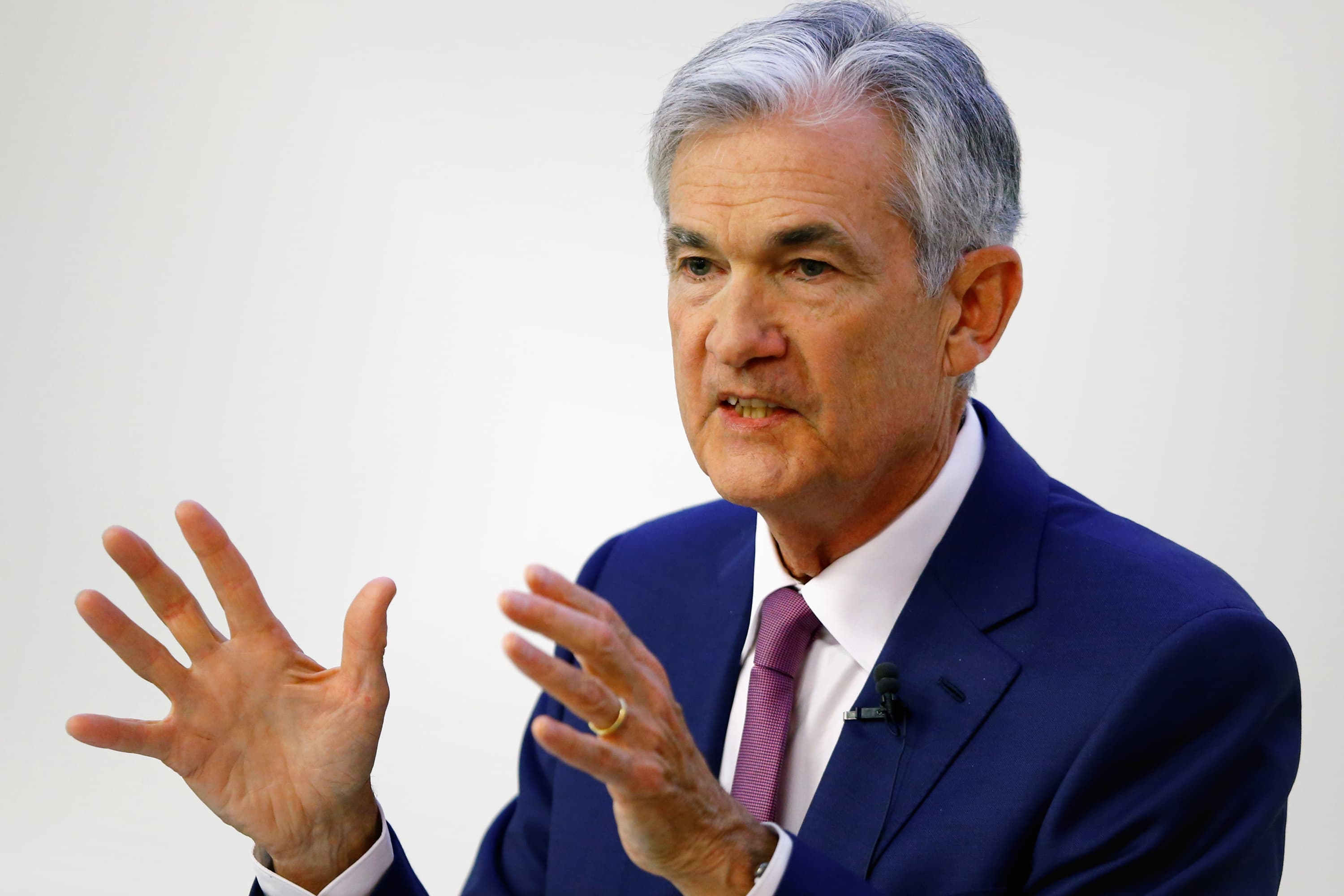This post was originally published on this site

Federal Reserve Chairman Jerome Powell said this week that the central bank is unlikely to alter its liquidity requirements for banks, a position that may endear him to Sen. Elizabeth Warren but also could lead to more headaches for the industry.
During a news conference Wednesday, Powell was asked whether the Fed might change the rules for big banks following the mid-September money crunch that sent very short-term lending rates surging.
The Fed has since responded with programs aimed at keeping its overnight funds rate within its quarter-point target range, as well as making sure there’s enough liquidity in the system to keep the short-term funding operations, known as repo, running smoothly.
Banking analysts have raised questions, though, over whether that will be enough. While Powell said the Fed continues to watch the issue, he said a change in the post-financial crisis liquidity rules likely won’t be part of its action plan.
“Would we lower capital liquidity requirements? … I don’t think so,” he said in response to a reporter’s question. “I don’t think that’s where this goes.”
The response may not have been what banking executives were hoping to hear, but it could be pleasing to Warren, the Democratic presidential candidate who has been the industry’s harshest critic on Capitol Hill.
In a recent letter to Treasury Secretary Steven Mnuchin, Warren stated that she is concerned banks will use the repo disturbances to try to relax the requirements for how much cash and top-tier assets they must hold on their balance sheets.
“Banks are reporting profits at record, levels, and it would be painfully ironic if unexplained chaos in a small corner of the banking market became an excuse to further loosen rules that protect the economy from these types of risks,” wrote Warren, who also is a member of the Senate Banking Committee.
‘Reacting and posturing’ to Warren
Powell noted that he found it a “surprise” that banks did not deploy more of their cash into the system when the repo markets stumbled. He and other Fed officials attributed the disturbances to cash getting sucked out of the system due to corporate tax payments coming due and an unusually large settlement of Treasury auctions.
Under ideal circumstances, banks would have stepped in and used their ample reserves — more than $1.4 trillion at the time of the repo problems — to keep the system flowing.
Powell said reserves were “well above” the level industry executives deemed comfortable “and yet they didn’t deploy that liquidity when there seemed to be great opportunities to do that. That didn’t happen. So why is that? We’re doing careful analysis of that.”
However, his seeming determination to exclude lowering liquidity requirements could cause issues ahead.
“I think he’s reacting and posturing around Elizabeth Warren,” said investment banking veteran Christopher Whalen, head of Whalen Global Advisors. “If we had some leadership in the White House, they might speak up at his point and say, ‘Yeah, we have to look at this, there’s clearly a problem’ and put the onus back on Warren, who doesn’t understand this.”
CNBC has reached out to Warren for comment.
There have been other concerns raised about the position banks are in regarding cash deployment specifically in the repo market.
J.P. Morgan Chase CEO Jamie Dimon said that while his bank’s reserves are large, it is reluctant to part with them.
“That cash, we believe, is required under resolution and recovery and liquidity stress testing,” Dimon said during the bank’s earnings call. “And therefore, we could not redeploy it into repo market, which we would have been happy to do. And I think it’s up to the regulators to decide they want to recalibrate the kind of liquidity they expect us to keep in that account.”
A ‘combustible cocktail’
The bank liquidity issues are part of a larger conversation in the market over whether the Fed has its arms around the short-term funding issues. Some analysts expect bigger problems to occur as the year comes to a close and banks deemed systemically important need to window-dress their balance sheets to meet Basel 3 stability requirements, which were established to assess too-big-to-fail banks.
Lower-than-needed reserves plus other constraints are creating a “‘combustible cocktail’ of potential year-end funding pressures,” Mark Cabana, rates strategist at Bank of America Merrill Lynch, said in a note to clients. “We believe the Fed is well aware of this issue and will do what is necessary to address the reserve shortage problem.”
Cabana believes a mix of increased T-bill purchases, longer-term repo operations and decreasing the Treasury cash balance can address some of the issues, though he still thinks there will be issues heading into year-end.
Whalen suggested, as have others, that the Fed ought to institute a standing repo facility that would allow banks to convert their Treasurys into reserves during periods of market stress. St. Louis Fed economists earlier this year endorsed such a plan.
“This is the problem: The board and the staff have their heads buried in the sand because they do not want to admit they are wrong. This is why they don’t want to formalize a standing repo facility that’s open to the broad market,” Whalen said. “If I were Mr. Powell, I would keep the issues open and tell the staff to look at them in a holistic way. Then I would send these recommendations to the Hill and tell them to look at them. What they’re doing is not enough.”




